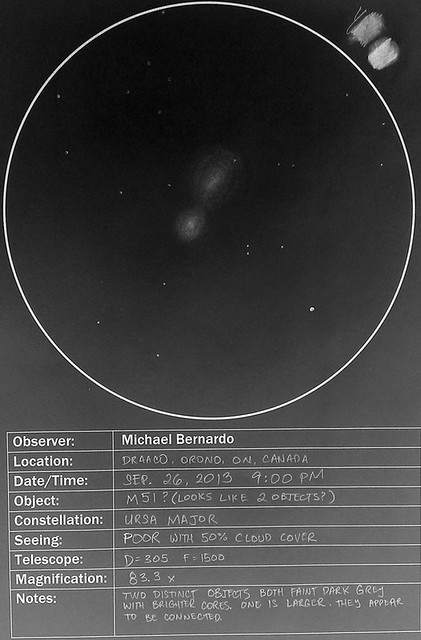I live in a white/red zone so my skies only show the major stars of the constellations, so I have to drive to a dark sky site whenever I want to observe DSO’s. It seems every time I drive out to a dark sky site for astronomy sketching and observation, I always end up forgetting to bring something. Last night, I forgot to bring my observer’s chair. The night before that, it was my blending stump. So I came up with a checklist for me to go over before each trip.
I only bring 1 telescope at a time so I will only check off items under the ‘Dob’ or ‘Newt’ categories.
| Category | Item | |
| Dob | OTA caps | |
| Dob | Mount | |
| Dob | Altitude Handles | |
| Dob | Focuser adapters/caps | |
| Newt | OTA cap | |
| Newt | Mount | |
| Newt | Suppression pucks | |
| Newt | Focuser cap | |
| Accessories | Eyepieces & caps | |
| Accessories | Flashlights | |
| Accessories | Observer’s chair | |
| Tools | Sky Atlas | |
| Tools | Laser Collimator | |
| Tools | Allen key & screwdriver | |
| Sketching | Clipboard | |
| Sketching | Pencils | |
| Sketching | Blending stump | |
| Sketching | Sketch templates | |
| Sketching | Reading light | |
| Attire | Eyeglasses | |
| Attire | Jacket & Hat | |
| Attire | Gloves | |
| Optional | Laptop | |
| Optional | Binoculars | |
| Optional | Camera | |
| Mandatory | Coffee |
At the end of the observing session, I use the checklist again to make sure I did not forget anything. If I am alone at the site, I also drive over and light up the spot to check for any garbage I might have left behind.
Common Sense Tips
They may not applicable to you, but these obvious ones are my pre-requisites:
- Make sure the weather forecast is favourable.
- Ensure my car has enough gas for a round trip.
- Fully charge my mobile phone’s battery.
- Tell someone where I’m going and when I will be back.
Are you an amateur astronomer who has to drive to a dark site to observe like me? Care to tell us what you have on your checklist, if you have one?










